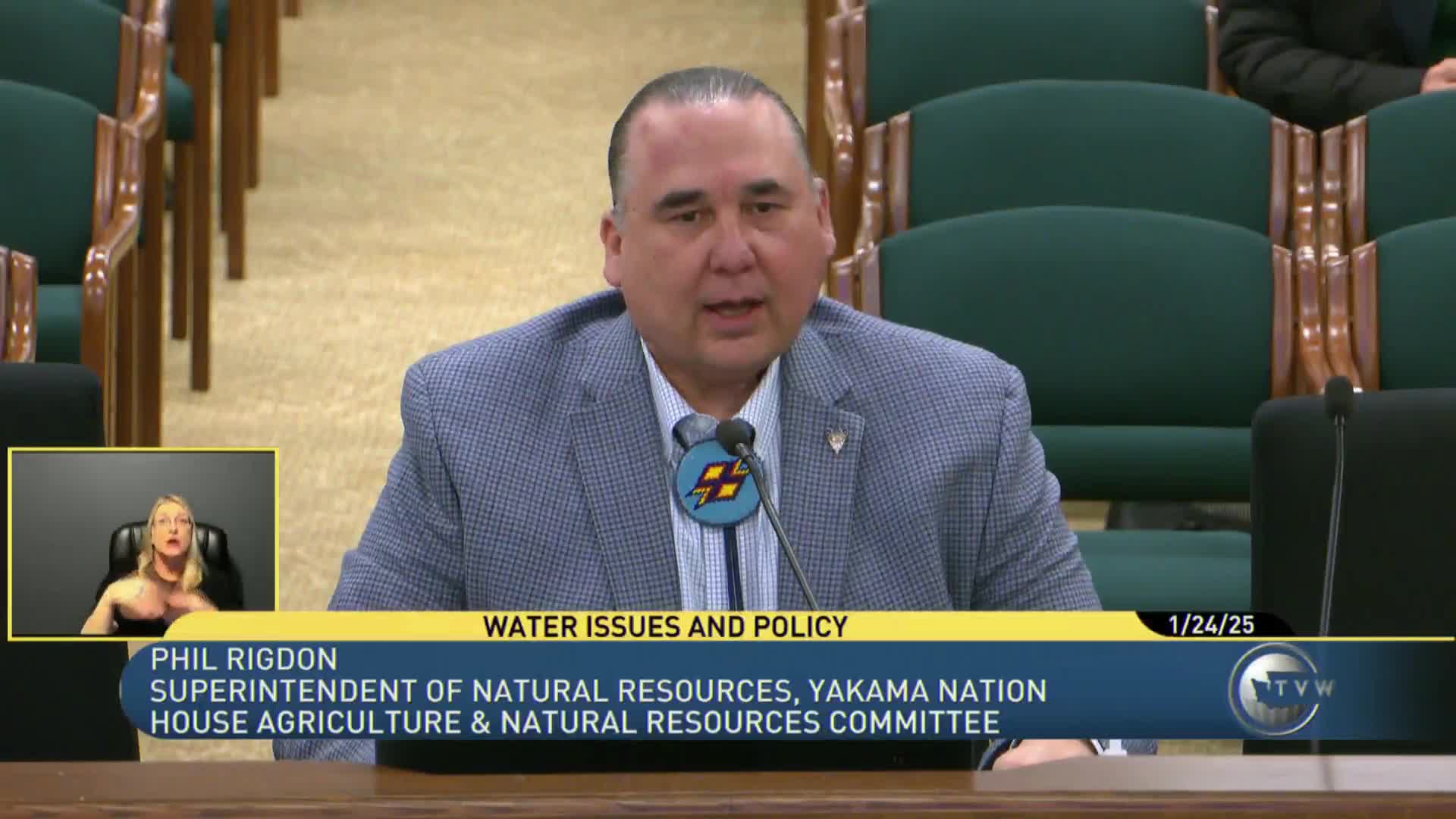Swinomish Tribe advocates for in-stream flow protection amid Washington water crisis
January 24, 2025 | Agriculture and Natural Resources, House of Representatives, Legislative Sessions, Washington
This article was created by AI summarizing key points discussed. AI makes mistakes, so for full details and context, please refer to the video of the full meeting. Please report any errors so we can fix them. Report an error »

In a recent meeting of the House Agriculture & Natural Resources Committee, significant discussions centered around water management and environmental sustainability, particularly in relation to tribal rights and the challenges posed by climate change. The meeting, held on January 24, 2025, featured key testimonies from tribal representatives and local government officials, highlighting the urgent need for collaborative solutions to water resource issues in Washington State.
One of the primary topics addressed was the ongoing efforts by tribal communities, particularly the Swinomish Indian Tribal Community, to protect in-stream flows essential for salmon populations. Director Larry Wasserman emphasized the tribe's commitment to safeguarding these flows, which are critical for both ecological balance and cultural practices. He referenced a landmark agreement from 1996 that established interim flows in the Skagit River, underscoring the tribe's historical willingness to collaborate with state and local entities to mitigate water use impacts while advocating for the preservation of their water rights.
Wasserman articulated the tribe's position that any new legislation should not exacerbate existing water scarcity issues, particularly as climate change continues to threaten water availability. He noted that studies have shown that even without additional diversions, summer flows remain inadequate for sustaining salmon populations, a situation worsened by a century of water withdrawals. The tribe's approach is to seek "no additional impacts," advocating for solutions that do not further diminish water resources.
The committee also heard from local government representatives, including Carl Schroeder from the Association of Washington Cities, who highlighted the challenges posed by projected population growth in the state. With an expected increase of 600,000 residents by 2035, the demand for clean drinking water and adequate water supply for daily needs is set to rise significantly. Schroeder pointed out that cities are grappling with the implications of water loss and the need for sustainable housing development, which is intricately linked to water availability.
The discussions underscored the importance of ongoing dialogue between tribal leaders, local governments, and state legislators to address these pressing water management issues. As the committee concluded the session, there was a clear commitment to continue exploring collaborative strategies that prioritize both environmental sustainability and community needs.
In summary, the meeting highlighted the critical intersection of water rights, environmental stewardship, and population growth in Washington State. The commitment from tribal representatives and local officials to work together suggests a proactive approach to navigating the complexities of water management in the face of climate change and increasing demand. As these discussions progress, the outcomes will likely have lasting implications for both the region's ecology and its communities.
One of the primary topics addressed was the ongoing efforts by tribal communities, particularly the Swinomish Indian Tribal Community, to protect in-stream flows essential for salmon populations. Director Larry Wasserman emphasized the tribe's commitment to safeguarding these flows, which are critical for both ecological balance and cultural practices. He referenced a landmark agreement from 1996 that established interim flows in the Skagit River, underscoring the tribe's historical willingness to collaborate with state and local entities to mitigate water use impacts while advocating for the preservation of their water rights.
Wasserman articulated the tribe's position that any new legislation should not exacerbate existing water scarcity issues, particularly as climate change continues to threaten water availability. He noted that studies have shown that even without additional diversions, summer flows remain inadequate for sustaining salmon populations, a situation worsened by a century of water withdrawals. The tribe's approach is to seek "no additional impacts," advocating for solutions that do not further diminish water resources.
The committee also heard from local government representatives, including Carl Schroeder from the Association of Washington Cities, who highlighted the challenges posed by projected population growth in the state. With an expected increase of 600,000 residents by 2035, the demand for clean drinking water and adequate water supply for daily needs is set to rise significantly. Schroeder pointed out that cities are grappling with the implications of water loss and the need for sustainable housing development, which is intricately linked to water availability.
The discussions underscored the importance of ongoing dialogue between tribal leaders, local governments, and state legislators to address these pressing water management issues. As the committee concluded the session, there was a clear commitment to continue exploring collaborative strategies that prioritize both environmental sustainability and community needs.
In summary, the meeting highlighted the critical intersection of water rights, environmental stewardship, and population growth in Washington State. The commitment from tribal representatives and local officials to work together suggests a proactive approach to navigating the complexities of water management in the face of climate change and increasing demand. As these discussions progress, the outcomes will likely have lasting implications for both the region's ecology and its communities.
View full meeting
This article is based on a recent meeting—watch the full video and explore the complete transcript for deeper insights into the discussion.
View full meeting
